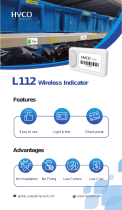- 3 -
Copyright © 2009 LG Electronics. Inc. All right reserved.
Only for training and service purposes
LGE Internal Use Only
Table Of Contents
1. INTRODUCTION ...............................................5
1.1 Purpose ......................................................................5
1.2 Regulatory Information .................................................5
2. PERFORMANCE ...............................................7
2.1 Product Name .............................................................7
2.2 Supporting Standard ....................................................7
2.3 Main Parts : Solution ....................................................7
2.4 Feature .......................................................................8
2.5 HW Spec. ..................................................................10
3. Technical Brief .............................................13
3.1. General Description ..................................................13
3.2. WCDMA Part ............................................................14
3.3. EDGE/GPRS/GSM RF block ........................................19
3.5. Control Flow .............................................................24
3.6 General Description ...................................................25
3.7 Power management ..................................................35
4. TROUBLE SHOOTING ..................................... 38
4.1 RF Component ..........................................................38
4.2 RF Path ....................................................................39
4.3 Trouble Shooting of GSM Part (GSM850/900/1800/1900)
......................................................................................40
4.4 Trouble Shooting of WCDMA Part ................................48
4.5 Checking Bluetooth Block ..........................................55
4.6 Checking FM Radio Block ..........................................58
4.7 Base band part ..........................................................61
4.8 Charger Troubleshooting ............................................63
4.9 USB Troubleshooting ..................................................64
4.10 USIM Detect Troubleshooting ....................................66
4.11 Camera Troubleshooting ..........................................68
4.12 Main Keypad Backlight Troubleshooting ....................70
4.13 Sub Keypad Backlight Troubleshooting ......................71
4.14 LCD Troubleshooting ................................................73
4.15 Vibrator ...................................................................74
4.16 Receiver Path ..........................................................75
4.17 Headset path...........................................................77
4.18 Speaker phone path ................................................79
4.19 Main microphone ....................................................81
4.20 Headset microphone ................................................83
5. Downloading ................................................ 85
5.1 Introduction ...............................................................85
5.2 Downloading Procedure .............................................86
5.3 Troubleshooting Download Errors ..............................101
5.4 Caution ...................................................................106
6. Block Diagram ...........................................107
7. CIRCUIT DIAGRAM ...................................... 109
8. BGA Pin Map ..............................................117
9. PCB LAYOUT ............................................... 121
10. CALIBRATION ............................................ 127
10.1 Confi guration of directory .......................................127
10.2 How to use Tachyon ...............................................129
11. EXPLODED VIEW & REPLACEMENT
PART LIST ................................................ 131
11.1 EXPLODED VIEW ...................................................131
11.2 Replacement Parts ................................................133
11.3 Accessory ............................................................. 150




















